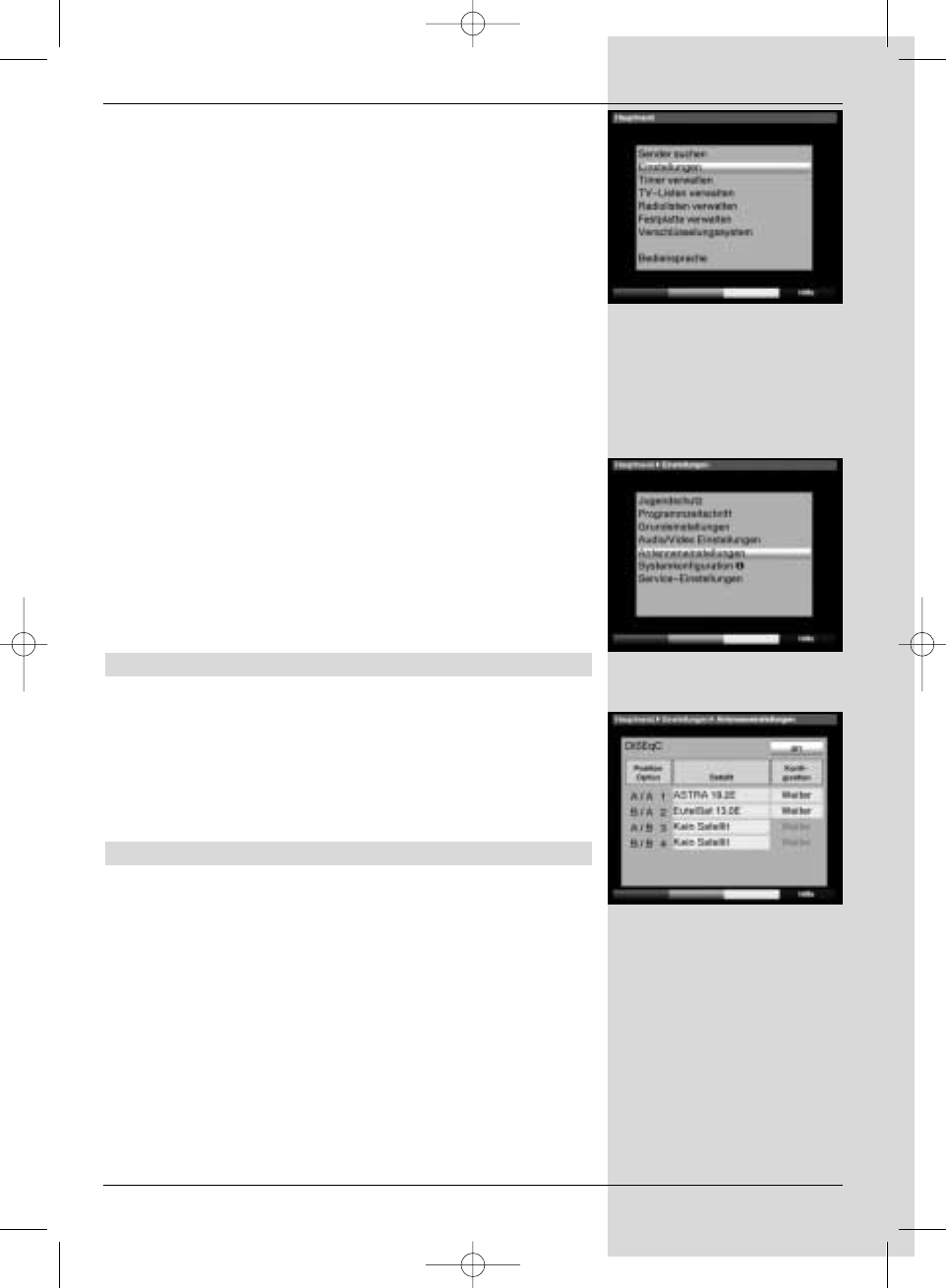
User LNC
If you have entered User LNC as the DiSEqC type, you can
make additional settings:
LOF low band
LOF (Local oscillator frequency) is the frequency at which the
LNC converts the frequency received into the so-called 1.
interim frequency, which can then be received by the digital
receiver. So-called Universal LNCs employ 2 LOFs to cover
the entire reception range from 10,7 to 11,8 GHz (low-band)
and 11,7 to 12,75 GHz (high-band).
> In this line, use the numeric keys to enter the LOF
of the low band of your LNC.
LOF high band
> In this line, use the numeric keys to enter the LOF
of the high band of your LNC.
Transition LOF low/high
> In this line, use the numeric keys to enter the
frequency at which your LNC switches from the low
band to the high band.
> Press OK to accept the settings into memory.
Signal/Quality
If you have entered the parameters of the test transponder
correctly, you will see in these lines indicators showing signal
strength and signal quality.
6.4.4 Rotary antenna
When operating the digital receiver in conjunction with a
rotary antenna equipped with a DiSEqC compatible motor
(Level 1.2), activate the DiSEqC control (Point 6.4.1) by
setting it to on and please note Point 9 of the operating
manual.
7 Operation
7.1 Switching on and off
> Switch the digital receiver on by pressing the
On/Standby key either on the unit or on the remote
control.
> Press the same key again, either on the unit or on the
remote control, to switch the receiver off.
> The receiver is now in standby mode. If this feature
has been activated (as described in Point 6.2.4) the
current time will be shown in the display.
If the current time is not shown, this must still be
downloaded to the receiver. To do this, switch the unit
on and switch to reception of a major channel, such
as ZDF, that broadcasts a time signal, for about 30
seconds, to acquire the current time automatically.
21
(Fig. 6-8)
(Fig. 6-6)
(Fig. 6-7)
Bed_anl_.qxd 20.02.04 16:28 Seite 21


















